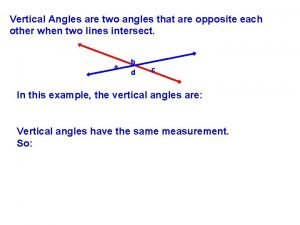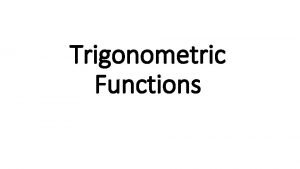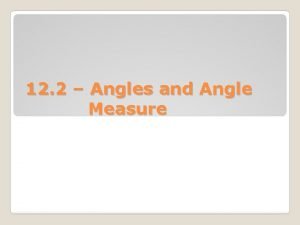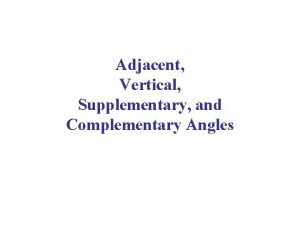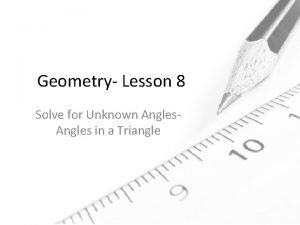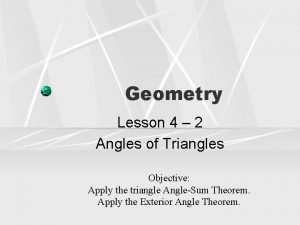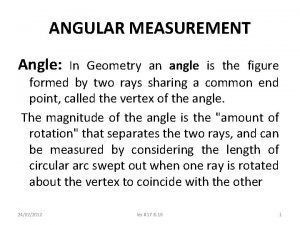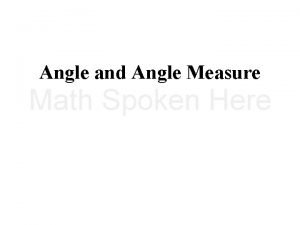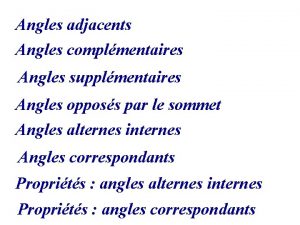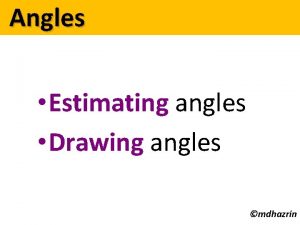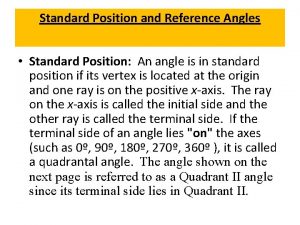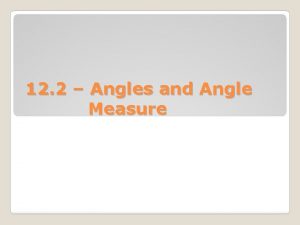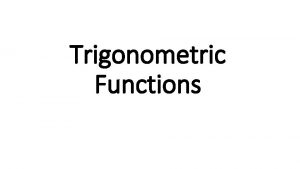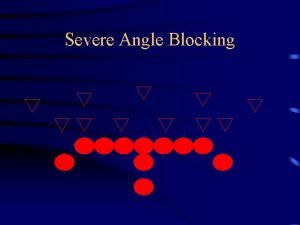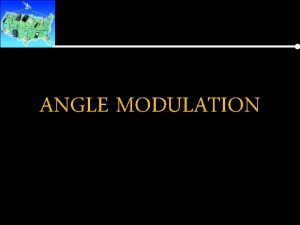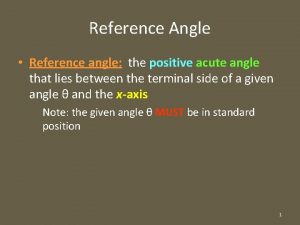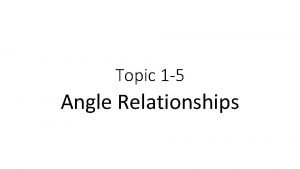Angles in Standard Position Definitions An angle is


















- Slides: 18


Angles in Standard Position - Definitions An angle is formed by rotating an initial arm about a fixed point. An angle is said to be in standard position when the initial arm is on the positive x-axis and the vertex is at (0, 0). Positive angles have a counterclockwise rotation. Negative angles have a clockwise rotation. A principal angle is the angle measured from the positive x-axis to the terminal arm. The principal angle is always a positive measure. A reference angle is the angle measured from the closest x-axis to the terminal arm. The reference angle is always an acute angle and is always positive. Coterminal angles are angles that share the same terminal arm. Angle measure + 360 n

Sketching Angles in Standard Position Sketch the following angles in standard position. State the principal angle, the reference angle, and one positive and one negative coterminal angle. a) 1500 b) -2600 c) 5600 Principal Angle 1500 Principal Angle 1000 Principal Angle 2000 Reference Angle 300 Reference Angle 800 Reference Angle 200 Coterminal Angles 5100 -2100 Coterminal Angles 4600 -6200 Coterminal Angles 5600 -1600

Sketching Angles in Standard Position d) -2200 Principal Angle 1400 Reference Angle 400 Coterminal Angles 5000 -5800 To find all coterminal angles: q = 140 + 360 n where n is an element of the integers.

Angles and Their Measure • What is an angle and what are its various components? • What is standard position and when are two angles coterminal? • How do we measure angles? • How do we compute arc length? • How do we compute linear speed angular speed?

Topics • Angles, initial side, terminal side • Degrees, minutes, seconds, and radians • Coterminal, complementary, and supplementary angles • Arc length • Linear speed angular speed

Angles An angle consists of two rays with a common vertex, together with a direction (either clockwise or counter-clockwise). The side where the angle begins is called the initial side. The side where the angle ends is called the terminal side.

Angles

Standard Position An angle is in standard position if its vertex is at the origin and its initial side lies on the positive x-axis.

Standard Position This figure shows a general angle in standard position.

Terminology Angles are often denoted by lower case Greek letters, particularly (alpha), (beta), (gamma), (theta), and (phi). A positive angle is an angle which is oriented counter-clockwise. A negative angle is an angle which is oriented clockwise.

Terminology Two angles are coterminal if they share the same terminal side when drawn in standard position. We say an angle lies in quadrant I if the terminal side lies in quadrant I. Similarly, we can define angles lying in the other quadrants. We say an angle is quadrantal if its terminal side lies on one of the axes.

Measuring Angles There are two types of units used to measure angles: • Degrees, minutes, and seconds • Radians - We will talk about these later

Degrees, Minutes and Seconds One full circle is divided into 360 degrees. Degree measure is denoted by a small superscripted circle, e. g. 74 o.

Degrees, Minutes and Seconds One degree is divided into 60 minutes. Minutes are noted by a prime, e. g. 14. One minute is divided into 60 seconds. Seconds are noted by a double-prime, e. g. 15.

Terminology An acute angle lies in the first quadrant. An obtuse angle lies in the second quadrant. A right angle has measure 90 degrees. A straight angle has measure 180 degrees.

Remark Two coterminal angles have measures which differ by any multiple of 3600. To find coterminal angles, simply add or subtract any multiple of 3600

More Terminology If an angle has measure , then the complement of this angle has measure 90 o-. These two angles are called complementary. If an angle has measure , then the supplement of this angle has measure -. These two angles are called supplementary. 180 o
 Property of vertically opposite angles
Property of vertically opposite angles Obtuse vertical angles
Obtuse vertical angles 5th position
5th position Graphing angles in standard position
Graphing angles in standard position 12-2 angles and angle measure
12-2 angles and angle measure Angle relationships definition
Angle relationships definition Dynamic discounting definition
Dynamic discounting definition Standard definitions for techniques of supply chain finance
Standard definitions for techniques of supply chain finance Vertical supplementary angles
Vertical supplementary angles Answers
Answers Intersecting chords
Intersecting chords Cavosurface angle for amalgam
Cavosurface angle for amalgam Lesson 4-1 angles of triangles
Lesson 4-1 angles of triangles We can use angle guage with a sine bar to measure angles
We can use angle guage with a sine bar to measure angles Fundamental position vs anatomical position
Fundamental position vs anatomical position Definition of fundamental position
Definition of fundamental position Picture of dorsal recumbent position
Picture of dorsal recumbent position Semiprone position
Semiprone position 3 point turn
3 point turn

